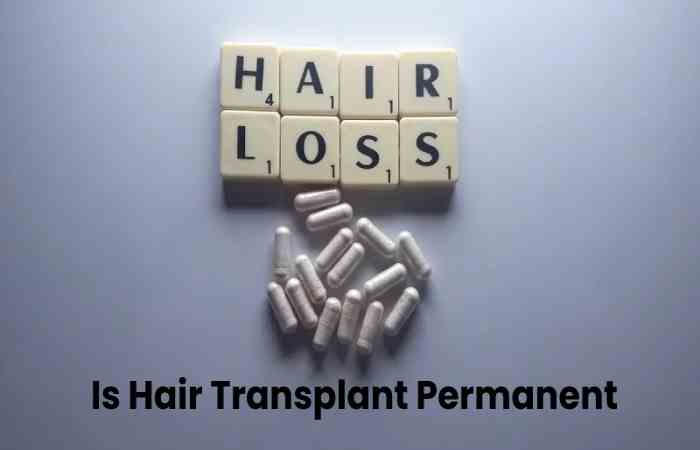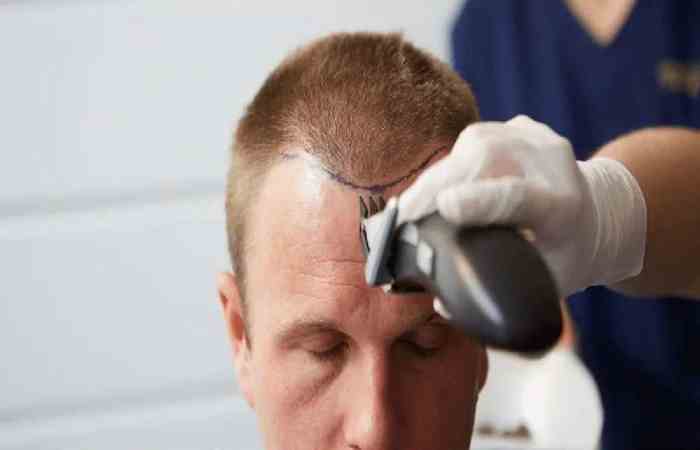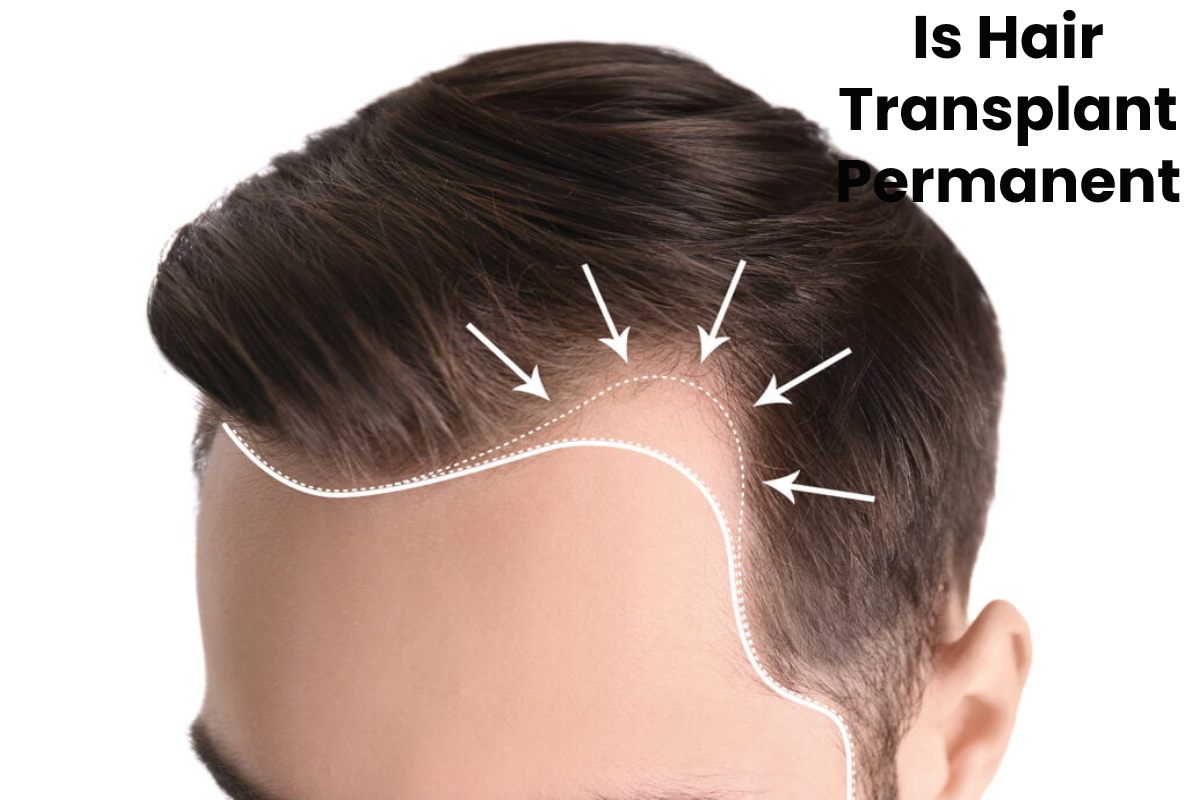Hair Transplant Permanent
When you think of “hair transplants,” you might remain to envision the patchy, noticeable hair plugs of years past. But hair transplants have come a long way, particularly in the last decade.
Hair transplantation, sometimes called hair restoration is an outpatient procedure that uses micrografting technology to donate your hair follicles to other thinning areas of your scalp.

The results of a hair transplant are perceptibly long-lasting and considered permanent. However, the procedure is also time-consuming and does involve a healing and recovery process. People who take already experienced significant thinning of the hair on their scalp are the characteristic candidates for a hair transplant.
This article will help you know the results of a hair transplant, what to expect, and the types of events.
Table of Contents
Is it Permanent?
Afterward, your hair follicles are grafted into areas where your hair is thinning, it takes some time for your skin to heal. As a result, it’s usual for some of your hair to fall out for the first three months after the procedure.
Healing can take between 6 and 12 months. But once the healing process is complete, the transplanted follicles begin to grow hair that fills in the bald spots on your scalp. It is hair that will surely continue to grow with age.
The movement of the hair follicles is permanent; There is no way to reset them to their previous position. But like the rest of your hair follicles, transplanted ones have a lifespan. So eventually they may gradually stop producing as much hair as they used to.
When you think of “hair transplants,” you might still picture the blotchy, showy plugs of hair of yesteryear. But hair transplants have come a long way, especially in the last decade.
Hair transplantation — sometimes referred to as hair restoration — is an outpatient procedure that uses micrografting technology to donate your hair follicles to other thinning areas of your scalp.
The results of a hair transplant are noticeably long-lasting and are considered permanent. However, the procedure is also time-consuming and involves a healing and recovery process. People who have already experienced significant hair thinning on the scalp are the typical candidates for hair transplantation.
This article will help you understand the results of a hair transplant, what to expect and what types of procedures are performed.
Healing can take between 6 and 12 months. But once the healing process is complete, the transplanted follicles begin to grow hair that fills in the bald spots on your scalp. It is hair that continues to grow naturally as we age.
The movement of the hair follicles is permanent; There is no way to reset them to their previous position. But like the rest of your hair follicles, transplanted ones have a lifespan. So eventually they may gradually stop producing as much hair as they used to.
What is a Hair Transplant?
A hair transplant is a procedure in which a plastic or dermatological surgeon moves hair into a bald area of the head. The surgeon usually moves hair from the back in front of the side of the head to the front or top of the head.

Hair transplants are usually performed in a doctor’s office under local anesthesia.
Pattern baldness is responsible for the majority of hair loss. It depends on genetics. The remaining cases are due to a variety of factors, including:
- diet
- emphasize
- illness
- hormonal imbalance
- medication
Are there different types of Hair Transplants?
There are two types of transplant procedures: slit grafts and micrografts.
Slit grafts contain 4 to 10 hairs per graft. Micrografts are 1 to 2 inches per graft depending on the coverage required.
Who can benefit from a Hair Transplant?
A hair transplant can improve your looks and your confidence. Good candidates for a hair transplant are:
men with hair loss
Women with thinning hair
anyone who has lost some hair due to a burn or scalp injury
Hair replacement is not a good option for
People who form keloid scars (thick, fibrous scars) after injury or surgery
Women with widespread hair loss over the entire scalp
People who do not have enough “donor” hair patches to remove hair for transplantation
People whose hair loss is due to medications such as chemotherapy
What happens in a Hair Transplant?
After thoroughly cleaning your scalp, a surgeon uses a small needle to numb an area of your head with local anesthesia.
Two main techniques are used to obtain follicles for transplantation: FUT and FUE.
Follicular Unit Transplantation (FUT):
The surgeon uses a scalpel to cut a strip of scalp from the back of the head. The incision is typically several inches long.
It is then closed with stitches.
Next, the surgeon separates the removed portion of the scalp into small sections using a magnifying glass and a sharp surgical knife. After implantation, these sections contribute to natural-looking hair growth.
In Follicular Unit Extraction (FUE), the hair follicles remain excised directly from the back of the head through hundreds to thousands of tiny punch incisions.
The surgeon usages a blade or needle to make tiny holes in the area of your scalp that will receive the hair transplant. Then they gently put hair into these holes.
A surgeon can transplant hundreds or level thousands of hairs during one treatment session.
After that, the graft, gauze, or bandages cover your scalp for a few days.
A hair transplant session can last four hours or more. Your stitches will remain removed about ten days after the operation.
It may take up to three or four sessions to achieve the full head of hair you desire. Sessions are spaced numerous months apart to allow each transplant to fully heal.
What complications are associated with a Hair Transplant?
Side effects of a hair transplant are frequently minor and subside within a few weeks.
bleeding
infection
swelling of the scalp
bruises around the eyes
a crust that forms on areas of the scalp where hair has remained removed or implanted
Numbness or numbness in the treated areas of the scalp
itching
Inflammation or infection of the hair follicles known as folliculitis
Shock loss or sudden but typically temporary loss of the transplanted hair
unnatural looking tufts of hair

